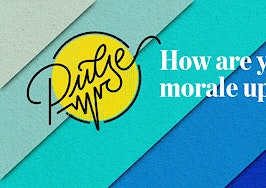The common-sense test
Finally, there’s the good old-fashioned common sense test. For this to work, you have to get past your own personal biases — yes, you’re biased, assuming you’re a human being — and look at the information objectively.
Wild claims for success (this test proves there is no fibrosis in the lungs), and the use of absolute terms (all viruses hate heat. This never works), are great clues that what you’re reading may not be fact-based. Life just isn’t this black-and-white. There’s much more grey in real life.
Be careful
It’s easy to get sucked into the information stream of the internet — and it’s one swift-moving river. Don’t get swept away. You can’t fact-check every single thing you read online. There just aren’t enough hours in the day. Nor can you refute everything, even if you know it to be blatantly false. Again, it’s that time commitment.
But you can — and should, in my opinion — make sure that anything you share gets at least a sanity check. Look at the dates of your source material. Provide a link to the original source. Do some basic fact-checking before continuing to propagate some story or information.
Right now, everyone is clamoring for new info. Everyone wants to latch onto good news. Share and be helpful. Just check what you’re sharing before clicking that “send” button.
Jay Thompson is a real estate veteran and retiree in Seattle, as well as the one spinning the wheels at Now Pondering. Follow him on Facebook, Instagram and Twitter. He holds an active Arizona broker’s license with eXp Realty. “Retired but not dead,” Jay speaks around the world on many things real estate.
Jay Thompson is a former brokerage owner who spent six years working for Zillow Group. He retired in August 2018 but can’t seem to leave the real estate industry behind. His weekly Inman column publishes every Wednesday.
The post I’ll be referring to a lot today starts off like this: “From a member of the Stanford Hospital board.” Despite knowing nothing about the Stanford Hospital and its board, there’s still some level of comfort that comes from seeing “a member of the Stanford Hospital board.”
After all, Stanford is a great school, so it’s probably safe to assume it has a great hospital, with a first-class board. Whatever follows must be accurate, because why would an institution like Stanford make something up?
The post goes on to list all sorts of information about the coronavirus. It tells us how to diagnose, treat and prevent the pandemic. We’re told it’s an “important announcement.” Sure, it contradicts some of the things you’ve seen published elsewhere, from equally impressive sounding sources. But this is Stanford, and it’s important.
Let’s take a look at what this information — information that’s being shared and spread widely across the internet — is telling us.
“This new virus is not heat-resistant and will be killed by a temperature of just 26/27 degrees. It hates the sun.” When I first read that line, I thought: “Seems strange for a Stanford board member to use temperature in centigrade instead of Fahrenheit.”
It also seems strange for something that’s supposedly coming from a science-based institution to not actually indicate which temperature scale was used. Was this just something that could’ve been lost when it was “translated” by a metric-system user? I wondered.
To claim a temperature of 80 degrees Fahrenheit kills the virus seems like quite the stretch, especially when you realize that the virus is spreading in the tropics of Brazil, the African jungle, and the southern hemisphere where it’s currently the end of summer.
But hey, this is from Stanford, so who am I to question this glaring conflict?
Next, we’re informed about how long the virus can live on various surfaces. Given that, three minutes earlier, a post from the World Health Organization (WHO) reiterated the often-repeated point that we don’t yet know how long the virus lives, this seems like big news!
Because it (supposedly) lives longest on metal surfaces, we’re instructed to, “wash your hands as soon as you can with a bacterial soap.” I’m sure they meant to say, “antibacterial” soap, because no one wants to pour bacteria-laden-anything on their hands.
Wait — bacteria? This is a viral infection. We’ve been told all our lives that bacteria and viruses are different, and that antibiotics won’t affect viruses. Now Stanford is telling us to combat the virus with antibacterial soap?
Things are beginning to not make sense. There is conflict after conflict with both common sense and previously published information.
Things like: “if you drink liquids, that will wash the virus into your stomach instead of your lungs, and your stomach acid will kill the virus.” And “just don’t use ice in your glass.”
No ice? Really?
Then, there’s talk about a simple test you can do to see if you’re infected. Despite reading numerous stories about the shortage of test kits. Despite complaints that it can take days to get results. Despite everything, apparently, Stanford Hospital has solved the problem.
The solution? Just hold your breath. That’s right. Who needs fancy, expensive and hard-to-find tests when all you have to do every morning is try to hold your breath? If you can hold it for 10 seconds, it “proves” there’s no fibrosis in your lungs. Hence, you can’t be infected with COVID-19.
Step back, and think about this for a second. If you can simply wash away the virus by drinking water (with no ice, of course) and the test is as simple as holding your breath, why are we in the situation we’re in right now?
We all desperately hope and wish it were this simple. However, wishes and hopes don’t make his information true. Stanford announced that the post is false and did not originate from them, and that spreading it as authoritative medical advice is dangerous.
A few days ago, I watched this story and a few others spread like, well, a virus, across the internet. One agent shared it on Saturday morning, and by Monday, Mar 23, others had shared it, too — 86 times. Who knows how many times it was viewed? Who knows how many people are waking up today, holding their breath for 10 seconds and thinking they’re not infected?
These types of stories are full of misinformation. Some may include some good tips, while others spread dangerous advice. People are now dying from self-medicating based on what they see on Twitter.
Given the uncertainty, the scope and the implications of our lives today, it isn’t surprising that “fake news” abounds.
Well-meaning people sometimes spread false information. There are bad players intentionally trolling and shaping news feeds. People don’t read past the clickbait headlines, and sometimes, they forget to think critically.
Times of crisis and uncertainty seem to amplify the extent and reach of unchecked and fabricated information. People want answers. They need comfort, so they latch onto whatever good they can find, despite all the clues slapping them in the face and warning them it simply isn’t true.
Spreading misinformation is easy. Even the Chief Medical Officer of CVS Pharmacy is guilty. They shared in an internal memo that drinking warm water is an effective way to combat coronavirus.
It’s impossible to process all the information that’s coming in 24/7, from multitudes of sources. If you’re going to share and potentially propagate bad information, you have a moral obligation to do some basic fact-checking first.
Even if you don’t intend to share, for your own knowledge and safety, you should fact-check anything from unknown or unproven sources. Now is not the time to believe what you want and hope it to be true. Now is the time to use the power and breadth of the internet to make sure you’re receiving good information.
Hopefully, you can see why that’s important. But what’s the best way to fact-check? What sites and tools are available? Here are a few tips to help you.
Trust, but verify
There are some sites that are inherently trustworthy. When it comes to health matters — which obviously the coronavirus falls under — you don’t need to fact-check everything from sites like the Center for Disease Control (CDC) or WHO.
You should, however, click through links to make sure they really point to where they say they do. Just because someone says, “According to the CDC…” (or, “from a member of the Stanford Hospital board…”) doesn’t mean that’s true. Without a link, you’re back to someone talking about what someone else supposedly said.
Mainstream media and network sites are generally reliable sources. I’m talking about sites like The New York Times, the Washington Post, the Harvard Business Review and The Wall Street Journal. When it comes to media and network sites, it’s important to understand the difference between biased reporting and factual reporting.
Most media sites are biased to the political left or right. Just like the population, some swing far to the left or right and some hover around the center. A site can be biased, but still rank very high for factual reporting.
Depending on your own biases, you may or may not be able to tolerate the bias some sites offer. Personally, I think it’s good to occasionally read well-sourced, highly factual news from sites leaning to the opposite side of my personal bias. Your mileage may vary.
A good website for gaining insight into a media or networks bias and factual-reporting levels is Media Bias/Fact Check.
Check the date
Have you ever scrolled through Facebook, stopped to look at a picture and said, “Oh my gosh, Gene Wilder died? Man, I loved him in Young Frankenstein.” So you share that article, leading with: “Bummed to hear of Gene Wilder’s passing. RIP!”
And after the first five comments of, “OMG, how sad!” someone finally says, “Yo dude, check the date — happened four years ago.”
This may not happen with a hot and current event like the coronavirus, but it’s an easy way to get pulled into sharing news that’s not necessarily fake, but old.
Google it
The internet tends to move at warp speed. Odds are if you’ve seen something more than once, someone else has already fact-checked it, and shared that with the world. You can search for keywords.
In the Stanford Hospital example, Googling, “Stanford Hospital coronavirus” brings up several references on how this is mostly false. To narrow your Google searches, you can search for exact phrases by putting quotation marks around a short phrase.
For example, enter this into the Google search bar (including the quotation marks): “Wash your hands as soon as you can with a bacterial soap.” This will show you all results that include that exact phrase. You’ll see numerous links debunking the “Stanford” information.
Dedicated fact-checking sites
Snopes is the site most people think of when it comes to debunking internet myths and legends. It’s super simple to use.
In our Stanford example, you only need to select a single statement, and paste that into the Snopes search bar. Try “hold breath coronavirus,” and you’ll quickly see that the test is simply incorrect. You can read deeper and find out why it’s false.
FactCheck.org (U.S. based) and FullFact.org (U.K. based) are also two excellent sites for quick fact-checking.

























